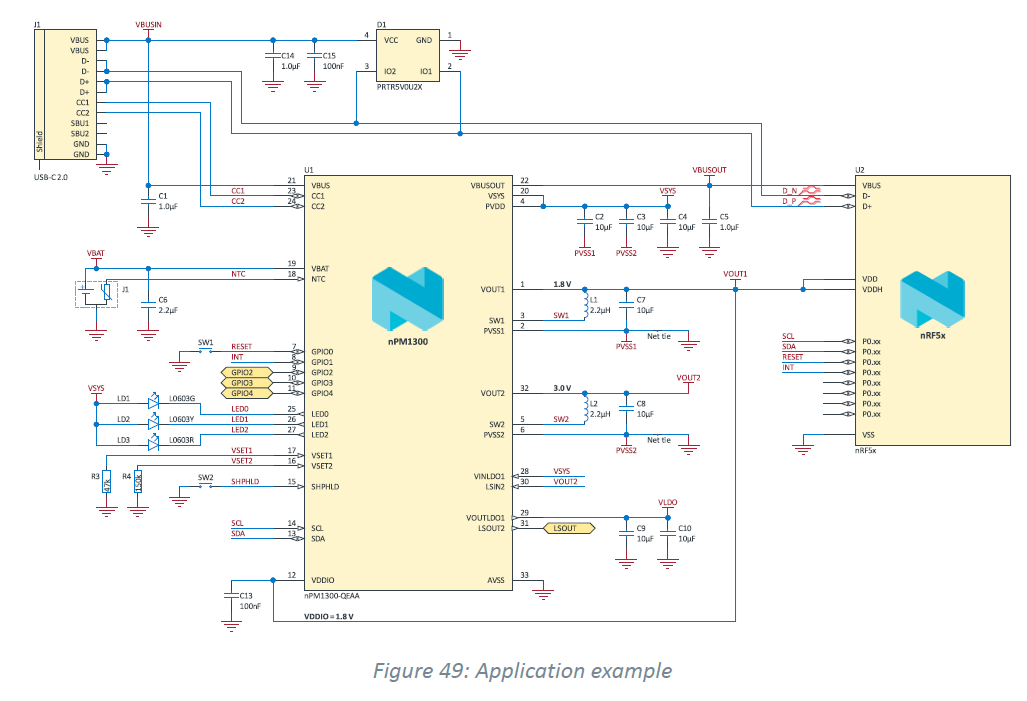Hello,
i'm developing a board based on nrf5340 and i want to use npm1300 as the pmic. My board is very constrained in terms of space so i'm trying to trade-off the flexibility in terms of testability (extra buttons, test-points, leds, etc.) with this. I read a lot the documentation of both nrf5340 and npm1300 and i would like to confirm that i understood well about the reset options.
Short recap of the valuable infos:
- npm1300 resets using 1 button connected to the SHPHLD pin or using 2 buttons (one on SHPHLD, the other on GPIO0). In both cases, button(s) needs to be pressed for t>tresetbut. The mode (1 or 2 buttons) needs to be set using proper register configuration.
- nrf5340 resets using 1 button on the RESET pin.
- the reference design at Fig.49 of npm1300 Product specifications v.1.1 shows a 2 button configuration with 1 button on SHPHLD and the other button connected to both GPIO0 of npm1300 and RESET of nrf5340.

Being space constrained, i would like to add just 1 button to the board. The idea is to use it for the reset of both npm1300 and nrf5340 so, respect to the reference design, i would connect the button with both SHPHLD and RESET pin of nrf5340.
Is this a legit configuration considering that i need to program nrf5340 over and over for tests using the SWD port of a Segger J-link?
My question arises from the fact that in the boards i developed until now, the MCU (and all the stuff used for programming such as memory, etc.) was always supplied with VDD while reset pin was triggered. In this case, due to the fact that the reset of npm1300 causes a power cycle on the nrf5340, i wonder if this could cause trouble to the programming phase. In your reference design this is not an issue because if the nrf53x reset is triggered the npm1300 is still active because of the 2-buttons configuration.
Any clarification on this matter is appreciated!
Thank you,
Francesco


